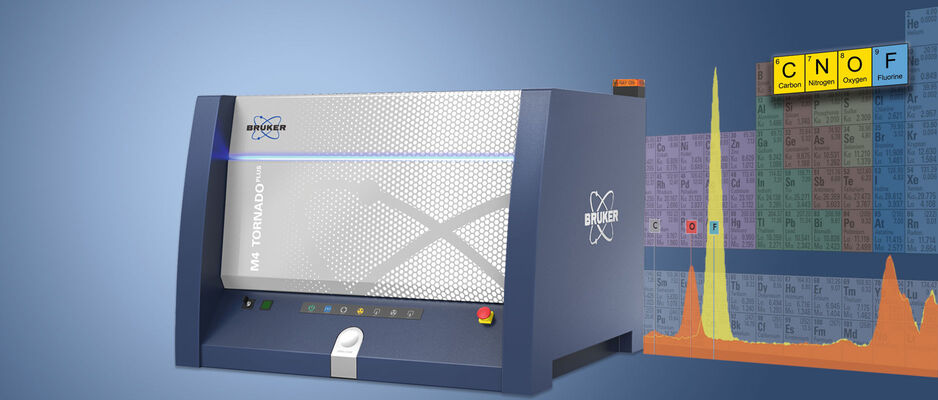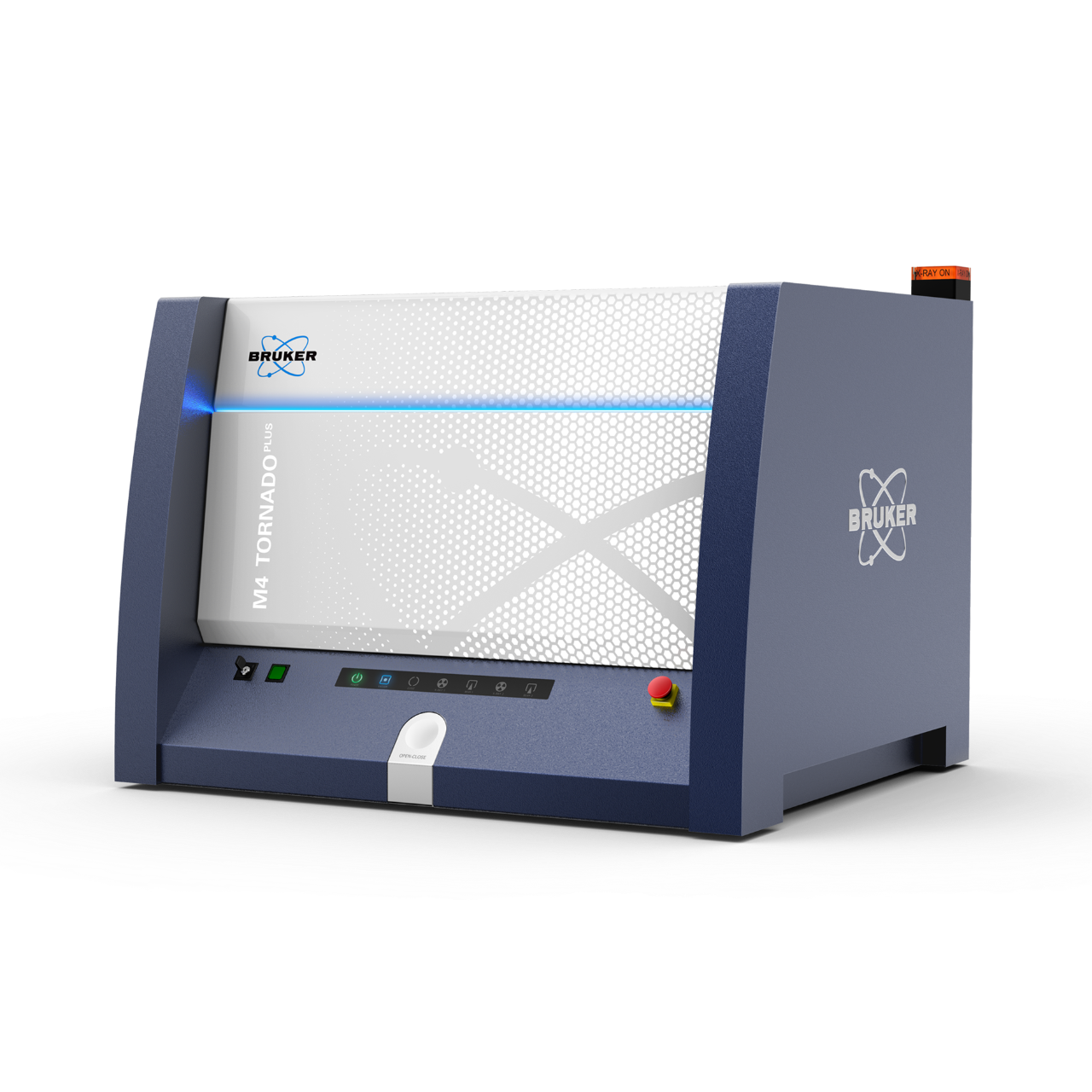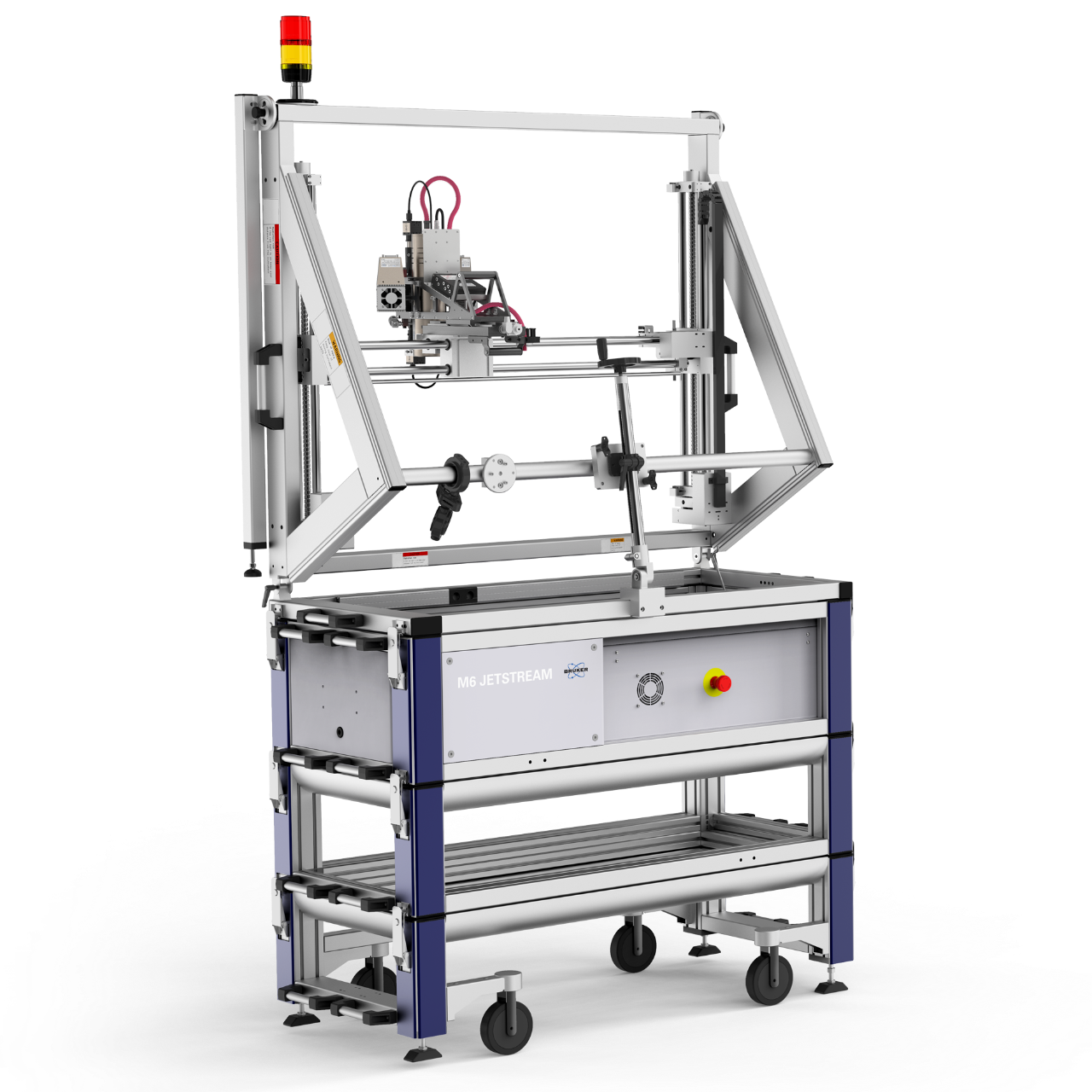

M4 TORNADO PLUS - A New Era in micro-XRF
Material Analysis with M4 TORNADO micro X-ray Fluorescence
Bruker invites you to get to know the M4 TORNADOPLUS, the latest member of the proven, market leading family of M4 TORNADO Micro-XRF analyzers.
Micro X-ray fluorescence is a universal technique for material analysis of a broad range of samples in terms of size, shape or composition. The M4 TORNADOPLUS offers several novel features that enhance the typical Micro-XRF fields of application towards geoscience and mining, biology, polymer research or semiconductor industry, among others.
Using super light detector entrance windows and an optimized X-ray tube, the M4 TORNADOPLUS extends the detectable element range from typically sodium/magnesium down to carbon. Therewith fluorine, oxygen, and nitrogen, as well as the L-lines of 3d transition metals (Ti-Zn), are accessible for micro-XRF analysis.
Another key feature is the fully software-controlled collimator changer for the second X-ray tube, which enables to choose between 4 different spot sizes for the analysis of heavy elements. The collimator can be set to spot sizes of 0.5 mm, 1 mm, 2 mm, and 4.5 mm and is therefore adaptable to very different analytical challenges.
With the introduction of an optional computer-controlled He-purge system, even wet samples can now be measured over extended periods of time. It also allows light element detection in samples which should not be exposed to low pressures. The instrument's sensitivity under helium atmosphere for oxygen and above is similar to that of a 2 mbar environment.
For very uneven samples the depth of field can be increased by using the novel aperture management system (AMS), which allows spot sizes of less than half their usual size for measurements that are 4 mm out of focus.
All these new features will be live presented by our application specialists, who will be happy to answer all your questions during the Q&A session.
Who Should Attend?
Anyone using the Micro-XRF technique or those looking to incorporate this method into their research.
Speakers
Dr. Max Buegler
Application Scientist Micro-XRF, Bruker Nano Analytics
Falk Reinhardt
Senior Application Scientist micro-XRF, Bruker AXS
Watch this Webinar On-Demand
Please enter your details below to gain on-demand access to this webinar.


